Dagu Glacier is located in Maqiao, Luhua Town, Heishui County, Aba Tibetan and Qiang Autonomous Prefecture, Sichuan Province, China. It is a national 4A-level scenic area, covering a tourist area of 210 square kilometers and a protected area of 632 square kilometers, with an altitude ranging from 3,800 to 5,100 meters. It belongs to a plateau climate zone, featuring distinct dry and rainy seasons, abundant sunshine, small annual temperature differences but large daily temperature differences, with an average annual temperature of 9.5°C. There are 13 modern glaciers in the scenic area, covering an ice area of 6.04 square kilometers. Dagu Glacier is the closest modern mountain glacier to metropolises on the easternmost edge of the eastern Qinghai-Tibet Plateau in China. It is also the glacier with the lowest altitude, largest area and youngest age in the world, and is characterized by "viewing mountain flowers in spring, colorful forests in autumn, glaciers in summer and snow scenery in winter".
History and Culture
The area where Dagu Glacier is located is a gathering place for Tibetans and Qiang people. Its unique geographical location and history have shaped distinctive folk customs. The local intangible cultural heritage "Armor Dance" is bold and unrestrained with infinite charm; the multi-part folk songs have elegant melodies and unique styles; the religious culture is profound and has a long history.
In 1992, Japanese scientists discovered Dagu Glacier via satellite. In August of the same year, the scientists climbed onto Dagu Glacier and conducted a one-week investigation. They concluded that Dagu Glacier is the glacier with the lowest altitude, largest area and youngest age in the world, and also the closest glacier to cities.
Major Scenic Spots
Golden Monkey Lake
It gets its name because Tibetan macaques often gather here. Every winter, Tibetan macaques stay at Golden Monkey Lake for about five months. When tourists enter Dagu Mountain, the first thing they see is the Golden Monkey Lake surrounded by mountains and forests, as well as its clear lake water.
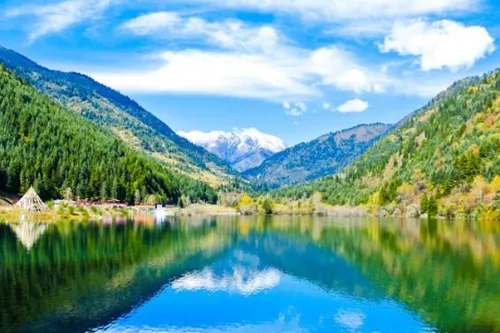
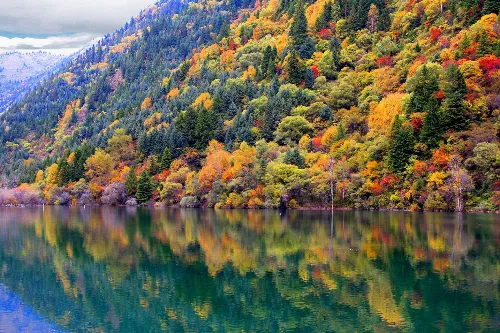
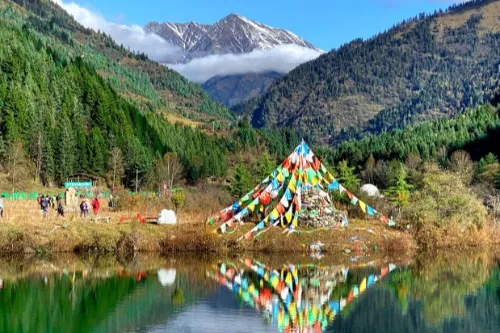
Zena Tso
In Tibetan, it means "release (animals or fish) to nature". The lake surface is broad and clear, with the reflections of snow-capped peaks and mountains and forests shining mutually in the lake.
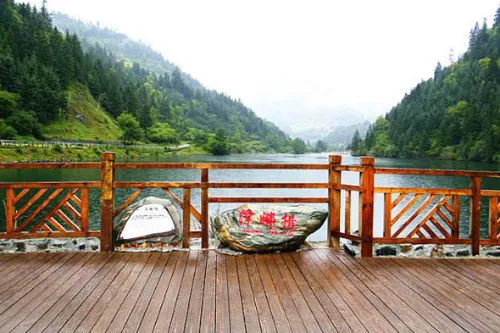
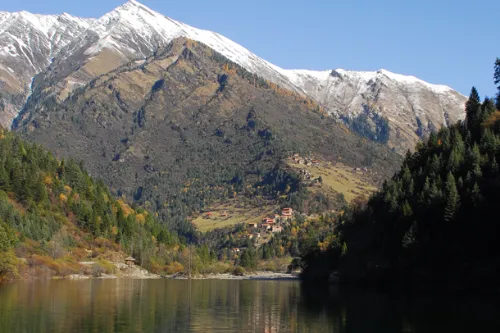
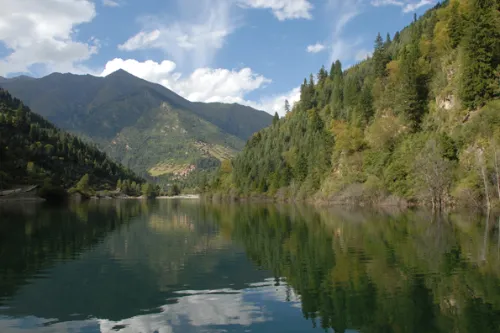
Dagu Lake
It is formed by the convergence of melted water from thousand-year-old icebergs, and the color of the lake changes with the seasons.
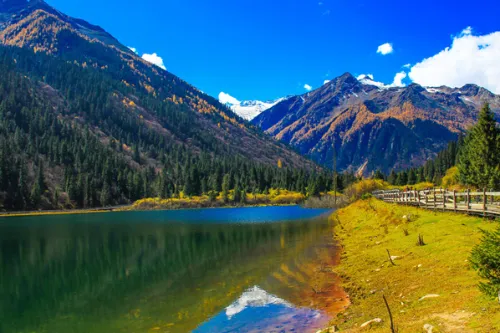
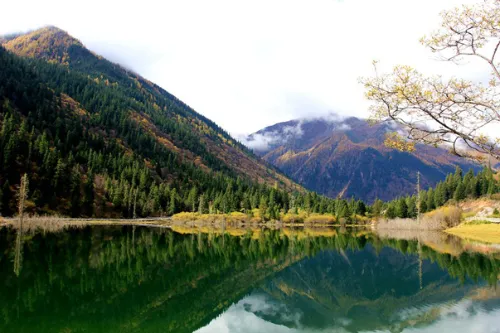
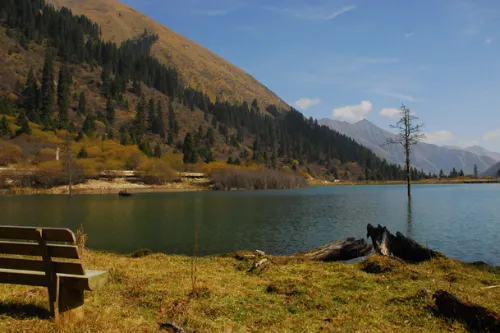
Lovers' Beach
Located at the foot of Dagu Glacier, it was originally a popular place for Tibetans to meet potential partners. Situated at the foot of pure snow-capped mountains, it implies that the love of lovers is pure and flawless; located at the foot of the ever-frozen glacier, it represents that the love of lovers is firm and unshakable.
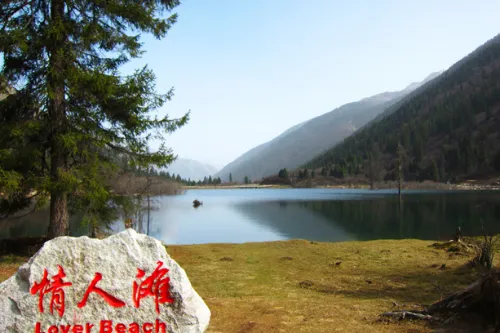
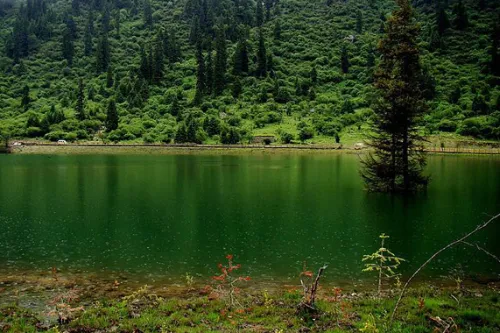
Logse Holy Mountain
In Tibetan, it means "Guardian God of the Mountains". It integrates alpine meadows, waterfalls and snow-capped peaks. With a warm climate, abundant water, lush forests and a high vegetation coverage rate, it is suitable for leisure and summer resort. It is also a pilgrimage site for Tibetans. Every May and September, Tibetans in the villages pray by chanting scriptures and performing ritual dances, hoping for good weather in the coming year.
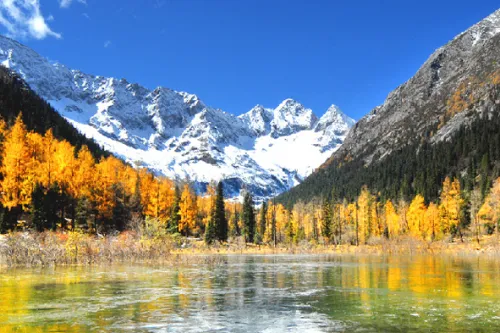
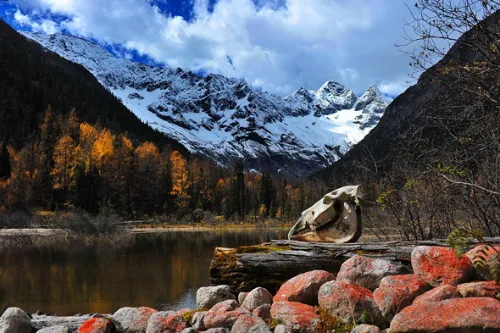

Cable Car Upper Station
Located at the top of Dagu Snow Mountain, with an altitude of 4,860 meters, there is a 4,860 Observation Platform here, where you can view Glacier No.1, Glacier No.2 and Glacier No.3. There is also a café here. Dagu Glacier is the glacier with the lowest altitude, largest area and youngest age in the world.
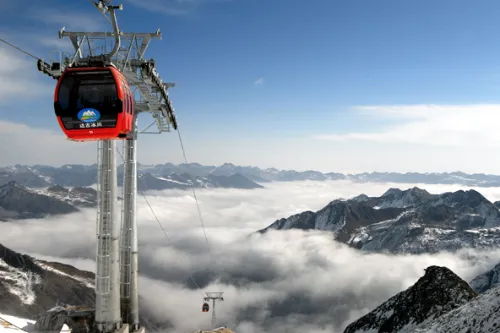
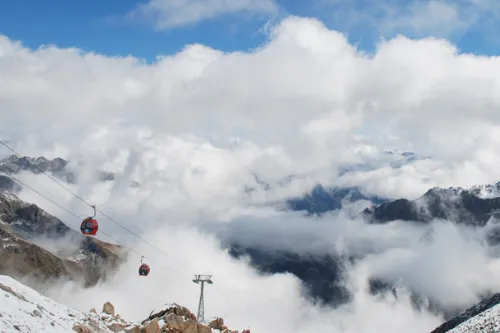
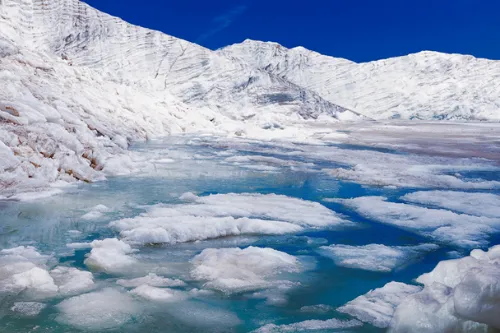
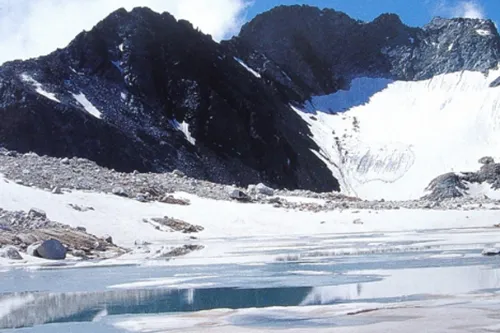
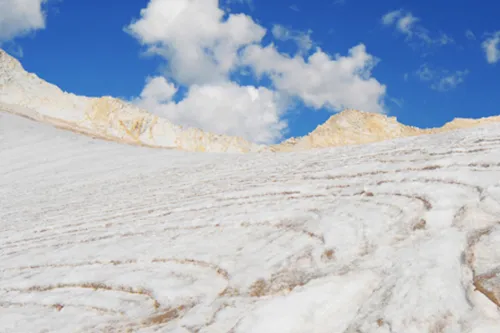
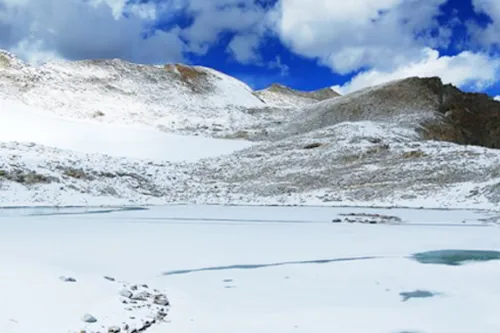
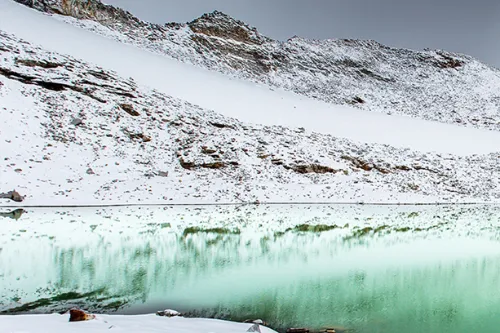
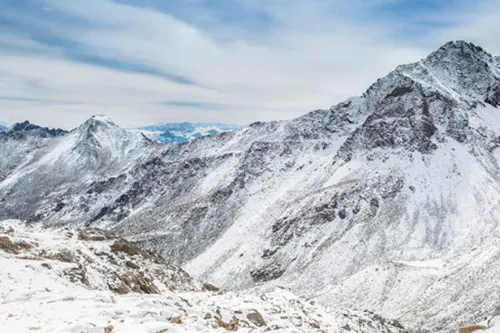
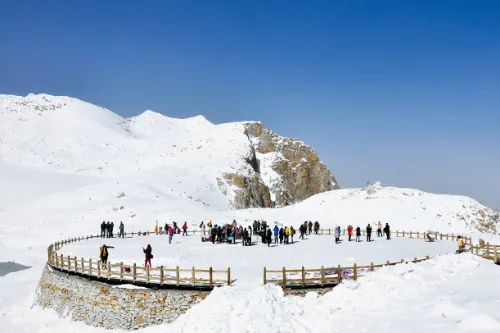
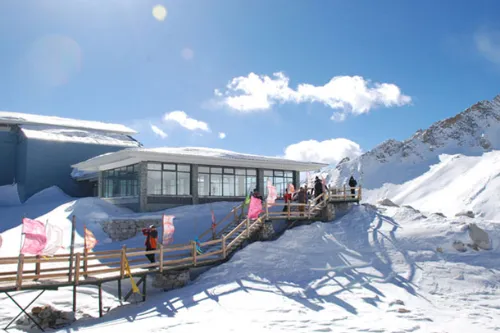
Dagu Glacier National Geopark Museum
The exhibition area is about 1,700 square meters, which is divided into 9 functional halls: Preface Hall, Dagu Adorned by Ice, Kalong with Beautiful Waters, Ecological Home, Nature Classroom, Science Popularization Cinema, Construction and Development, Ethnic Culture, and Red Army Culture. The museum collects and displays more than ten kinds of rock and mineral specimens and dozens of kinds of animal and plant specimens. It adopts various display methods such as sound, light, electricity and multimedia to comprehensively introduce the unique geological heritage resources, diverse species, rich culture and research achievements of Dagu Glacier Geopark.
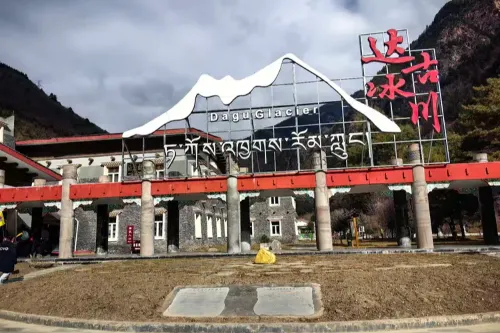
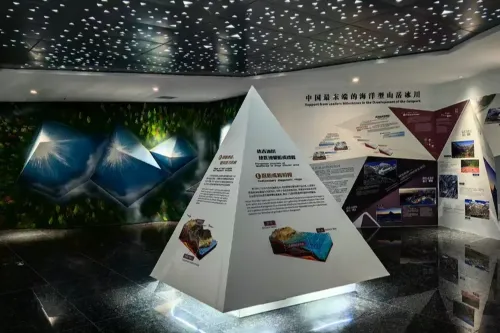
Tour Route
Tourists can first take a sightseeing bus to visit scenic spots such as Golden Monkey Lake, Zena Tso and Dagu Lake, and enjoy the natural scenery and wild animals along the way. Then take the cable car to the Glacier Observation Platform to enjoy the magnificent glacier scenery. They can also experience the feeling of overlooking from a high altitude on the world's highest-altitude cable car, and taste coffee while enjoying the beautiful scenery in the "loneliest café". After that, they can go to Logse Holy Mountain to experience the religious culture of Tibetans and the natural scenery. Finally, visit the Dagu Glacier National Geopark Museum to learn about the geological history and cultural connotation of the scenic area. It is recommended to arrange one full day for the entire tour.
Travel Suggestions
- The scenic area is located at a relatively high altitude. It is recommended to prepare medications for altitude sickness prevention in advance, such as Rhodiola rosea. During your visit, pay attention to preserving your strength and avoid strenuous exercise.
- The weather in the scenic area is changeable, with significant temperature differences between morning and evening. Even in summer, you need to prepare thick outerwear and warm clothing, such as down jackets and hardshell jackets.
- If you want to take beautiful photos, it is advisable to bring a wide-angle lens and a telephoto lens to capture different types of scenery.
- During your tour, you can stay at different scenic spots for an appropriate amount of time according to your interests and schedule to fully enjoy the traveling experience.
Notes
- Abide by the scenic area regulations. Do not randomly damage the scenic area's environment or facilities, trample on lawns, or pick flowers and break branches.
- Respect the local religious beliefs and customs. Do not enter religious sites without permission or disrupt religious ceremonies.
- When taking sightseeing buses and cable cars, follow the staff's instructions, fasten your seatbelt, and prioritize safety.
- Some areas within the scenic area are at high altitudes with low oxygen levels. If you experience physical discomfort, such as a headache or difficulty breathing, seek medical attention promptly or go to the oxygen supply points in the scenic area for oxygen inhalation.
Transportation
- Self-driving: Depart from Chengdu, take highways and roads including Rongchang Expressway (G4217) and National Highway 347 to reach the scenic area. The total distance is approximately 309 kilometers, and the driving time is about 4 to 5 hours.
- Public Bus: There are buses from Chengdu Chadianzi Coach Station to Heishui County. After arriving in Heishui County, you can transfer to local taxis or minivans to reach the scenic area.
Opening Hours
Ticket Sales Time: 8:30 a.m. - 3:30 p.m. The scenic area is usually open from around 8:00 a.m. to around 5:00 p.m., but the specific hours may be adjusted according to the season and weather conditions.
Tickets
Ticket + Sightseeing Bus Ticket: 199 RMB per person.
Ticket + Sightseeing Bus Ticket + Cable Car Ticket: 220 RMB per person.
You can search for the official WeChat public account "达古冰川" on WeChat to get the latest updates or purchase tickets online.
Online Booking
Click here to jump to the Trip.com ticketing platform for ticket purchase.


